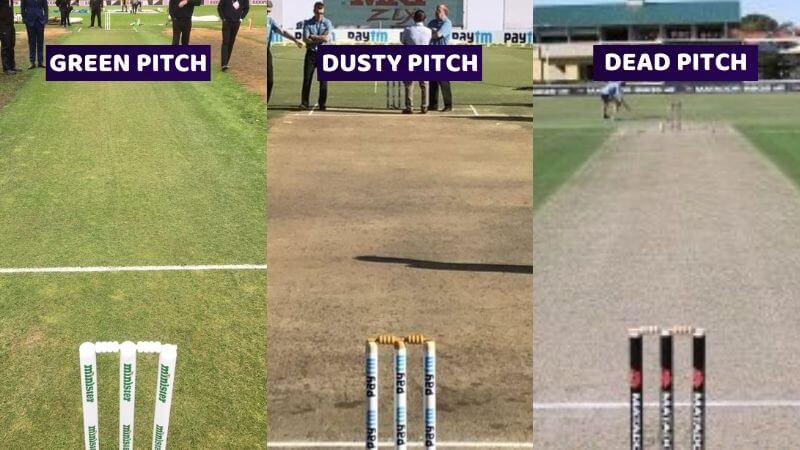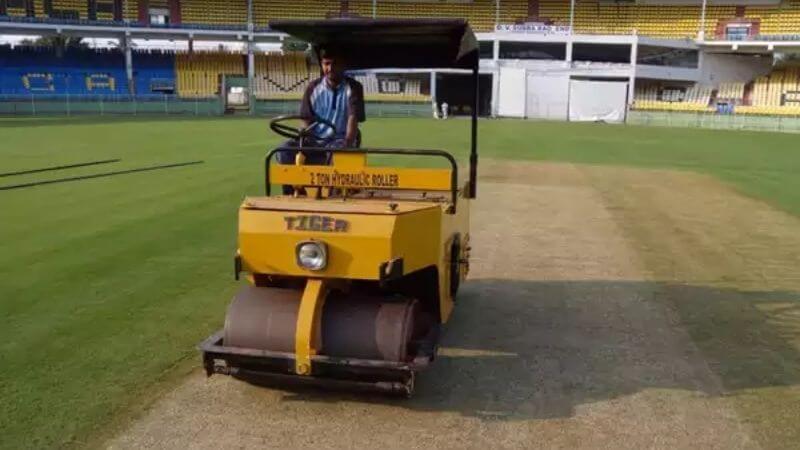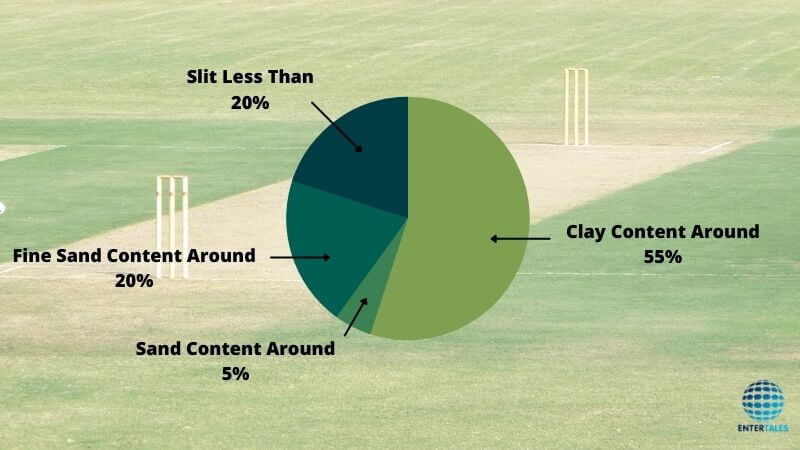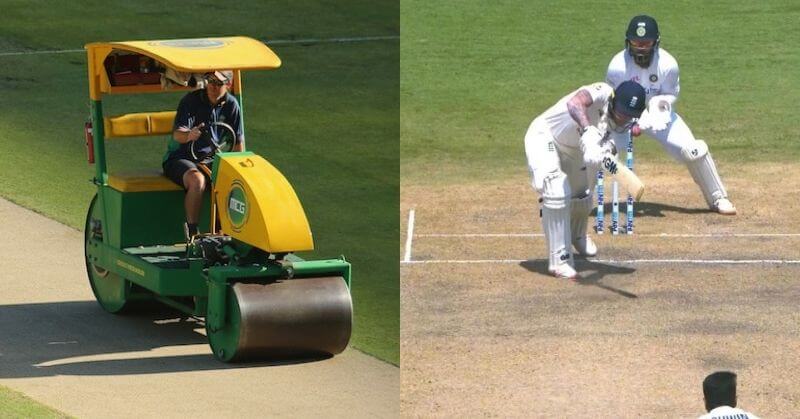Cricket is a religion in India. The third Test match between India and England finished in less than two days. It was the second Pink ball test in India. The game was played in the newly renovated World’s largest stadium ‘Narendra Modi Stadium‘ in Ahmedabad. Many people raised the question on the cricket pitch. The 22-yard cricket pitch carries a lot within itself. By looking at the pitch, the approximate score of the match can be determined. Cricket pitches play a decisive role in team selection, especially bowlers. The pitch is the reason that your favorite team scores high on one day and average on the other. Here is all you need to know about cricket pitches. Take a look at the basic concepts that the 22-yard pitch carries within it.
Three Basic Types Of Pitches

1. Dead Pitch
The dead pitch is a flat track pitch with absolutely no grass or moisture. These pitches are rolled continuously, and as a result, the moisture and grass are removed. These pitches are most suited for the batsmen as it supports neither the fast bowlers nor the spinners. The pitch is extremely challenging for the bowlers to take wickets. Generally, the scores on these pitches are high.
2. Green Pitch
Green pitches have grass covering on them. The pitch has a significant amount of moisture. Green pitch is perfect for fast bowlers as the ball does not grip much to the pitch, and movement is seen in the ball after pitching. The good length is the ideal bowling length for the fast bowlers on a green pitch. England, South Africa, Australia have a lot of grounds that boasts such pitches.
3. Dusty Pitch
The most significant aspect of the dead pitch is that it is soft and unrolled. Spinners get an extra edge when it comes to dead pitches as the pitch is soft and unrolled; the ball grips well with the soil and gains much more amount of turn than any other pitch. The ball stays low on a dead pitch and does not bounce much, making it difficult for the batsmen. A majority of grounds in India have dead pitches. Hence the team relies on the spinners to obtain wickets on home grounds.
Preparation And Maintenance Of The Pitch

Preparing and Maintaining a cricket pitch is a very painstaking process. A lot of things have to be taken into consideration while maintaining the cricket pitches.
1. Covering The Pitch
The groundsmen should cover the pitch to protect it from rain and dew. The covering or non-covering of the pitch significantly affects how the ball comes off the pitch, making the matter potentially controversial. If the pitch is covered overnight, the cover is removed as early as possible in the morning, on the day of play. Also, sometimes the bowlers’ run-up area is covered to keep it dry during inclement weather conditions.
2. Rolling The Pitch
The captain of the batting side has the liberty to order rolling of the pitch for not more than 7 minutes before the start of each innings and before the start of the subsequent day’s play. Once the game begins, the pitch cannot be rolled under any circumstances. Rolling the pitch may sometimes delay the play but can play a decisive role in whether it is better for the batsmen or the bowler.
3. Sweeping
Before rolling the pitch, it is swept to avoid any damage caused by rolling in debris. The pitch is also swept many times between the innings break or meals to clear any debris from the pitch. The only exception to this is when the umpires feel that sweeping the pitch may be detrimental to the pitch’s surface. No sweeping is done in this scenario.
4. Mowing
Groundsmen mow the pitch on each day of play. However, after the commencement of the game, mowing takes place under the supervision of the umpires.
5. Footholes And Footholds
The umpires must ensure that the bowlers and the batsmen’s footholes are cleaned and dried to facilitate the play. Players may also secure their footholes by using the sawdust provided. They do not do so if it violates the terms of the play in any way.
Who Decides The Type Of Pitch To Play On?
The home board has a say and a set of guidelines, while the home skipper can also voice his preference. The curators cumulatively decide the pitch as per the format of the game. Further, the curators decide the evaporation, rolling, grass process, soil composition, all as per the standard guidelines.
Science Of Soil

There is a lot more regarding the pitch that the naked eye can see. The color of the soil black or red; to be more precise, the soil’s composition plays a vital role in the pitch’s behavior. A suitable pitch has more than 50 percent of clay content, less than 5 percent sand content, fine sand should be less than 20 percent, silt should be less than 20 percent, and the pH value ranging from 630 to 730. However, the composition can be altered according to the requirements of the play.
The color of the soil also plays an important role while determining the characteristics of the pitch. The two soil types, namely red and black, differ a lot in various aspects. Let us discuss some of the aspects they differ in.
- Elasticity: Black soil is more elastic than red soil; hence it generally lasts longer.
- Clay content: Black soil has more clay content than red soil.
- Water absorption: When it comes to water absorption, black soil has more capacity than red soil.
- Wear and tear: Since the red soil has more silt, it undergoes wear and tear to a greater extent than black soil, which is generally non-porous.
Hence, it is beyond description that how important the pitch is in the game. From ground structure to performance, everything has something to do with the condition of the pitch. With this now, you are informed enough to move towards the advanced knowledge of Cricket. Share this knowledge and information with your friends as well.
Follow Us: Facebook | Instagram | Twitter | Youtube | Pinterest
Entertales is on YouTube; click here to subscribe for the latest videos and updates.














